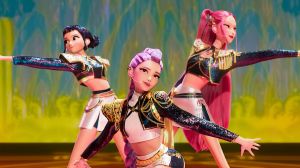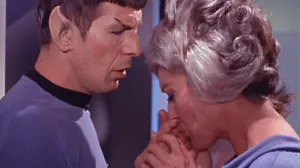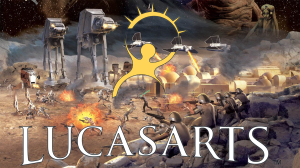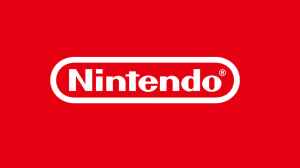
Over the past month, many of the top titles from the DC Comics Rebirth relaunch have hit their 50th anniversary issues. Batman celebrated a big wedding, Wonder Woman featured a war against the Dark Gods, The Flash delivered a shocking cliffhanger, and the list goes on. At this point, Rebirth has moved from being the new hotness at DC Comics to being the status quo. The New 52 is in the rearview mirror and many of its consequences for continuity and storytelling are being forgotten, both directly and on the sly. Rebirth is DC Comics today.
Videos by ComicBook.com
These anniversaries and the perspective of a full two years of the publishing initiative provide an excellent vantage point to reflect upon the most recent shakeup at DC Comics. Unlike some of their own distinguished competition, the publisher sticks to their plans and relaunches for an extended period of time which is useful in evaluating what works and what doesn’t. Overall, it’s difficult to argue that Rebirth has not been a success, but to paint it as a perfect coup in superhero comics would be an oversimplification. What is needed instead is an examination of both the pros and cons from across the past couple of years.
That’s why we’ve created our own list to run down both categories. These are the lessons learned of DC Comics’ Rebirth, and a great sense of what they did right and how they can keep building on current successes to tell stories in an even brighter tomorrow.
Pro: A Clear Vision for Each Character

When Rebirth was first announced, it was done in the biggest fashion possible. DC Comics bragged on each of their new creative teams and promised bold new directions for many of their characters. Whether or not you are a fan of any individual decision, it’s impossible to deny the ambition in these choices. Christopher Priest’s Deathstroke, Tom King’s Batman, and Greg Rucka’s Wonder Woman are only a few examples of coherent, long-term stories that have delivered a new vision for decades-old properties. This sort of coherent push for standout runs has created some of the biggest successes of the entire Rebrith era.
Con: A Failure With Fill-Ins

The clear ambition and direction of almost every Rebirth launch is contrasted by what happened to many series upon the departure of initial creative teams. Almost every title to lose its core writers stumbled and has remained something less than the debut. There is no more obvious case of this than Wonder Woman. What began as the most celebrated relaunch of the line has been consistently panned after the departure of writer Greg Rucka. Both new writers were pitched as fill-in creators, but James Robinson has remained on the title for almost a year. Rebirth had great ideas to start, but has been unable to assemble backup plans when the launch concept ended.
Pro: Making the Schedule Work

It’s not an exaggeration to say that the editorial work present across most of the Rebirth line is nothing short of miraculous. While some of the titles have been returned to monthly publication, many remain on a bi-weekly schedule two years after beginning. Producing 50 or more issues of a single series with limited or no fill-in issues is astounding. It has provided regular fixes of DC Comics’ most popular characters to their fans with very few delays. When a series does miss a beat, it is the exception instead of the rule, something that even monthly publishers struggle with.
Con: Diminishing Artistic Contributions

The clear counterpoint to the incredible scheduling and bold directions of many Rebirth titles is how these same books have diminished the role of artists. No artist working at DC Comics today is capable of creating two comics per month, and many struggle with producing twelve per year. A bi-weekly schedule ensures the role of writer as auteur and creates a system in which the artist will never be as integral to the series. Wonder Woman provided a rare counterbalance to this by telling two stories that allowed a single artist to be essential in both cases. However, Rebirth for the most part has reduced the role artists play in guiding series and consumer tastes.
Pro: Mini-Events and Limited Crossovers

There have been plenty of events throughout the Rebirth era, but none that compare to the likes of Forever Evil or Flashpoint before it. Instead of focusing on line-wide crossovers and tentpole summer events, DC Comics has allowed these sorts of stories to evolve organically and remain contained to short miniseries or single lines of their brand. “Night of The Monster Men” and “No Justice” are just two great examples of how epic stories have been made more accessible with less required reading and a smaller budget. It is the ideal model for this mode of story and one DC Comics should stick to moving ahead.
Pro: Elevation of the Core Properties

The original Rebirth line up supported all of DC Comics biggest heroes and teams. It was a set of titles designed to please existing fans and invite those who might have lapsed. While the overly large lineup of 52 titles in 2011 allowed for lots of oddities to be explored, the quicker pace of publication allowed for popular titles to occasionally go to strange places. This is a strategy that has resulted in fewer cancellations and a lower rate of reader attrition.
Con: Limited Opportunities for Growth

Unfortunately, what worked well for many existing or lapsed fans was not a great hook for new readers. DC Comics should be applauded for the upcoming Ink and Zoom imprints, as well as comics like DC Superhero Girls. However, Rebirth was always a relaunch aimed at their core audience. Even the #1 issues rarely acted as jumping-on points, while the increased rate of publication made sure that budgets and pacing would discourage new readers from considering a pull list at their local retailer.
Pro: Creation of Pop-up Imprints

One strategy to emerge from the centering of core superheroes and a lack of mass appeal was the construction of pop up imprints. Starting with Young Animal, DC Comics has pushed waves of talented creators centered on a single aesthetic or story idea. The Wildstorm and upcoming relaunches of Sandman and Vertigo Comics all show great promise, and help to broaden DC Comics’ avenues for reaching comics readers. Rather than forcing all of their properties into one line, they’ve allowed them to diverge and it has been one of the great successes of Rebirth so far.








